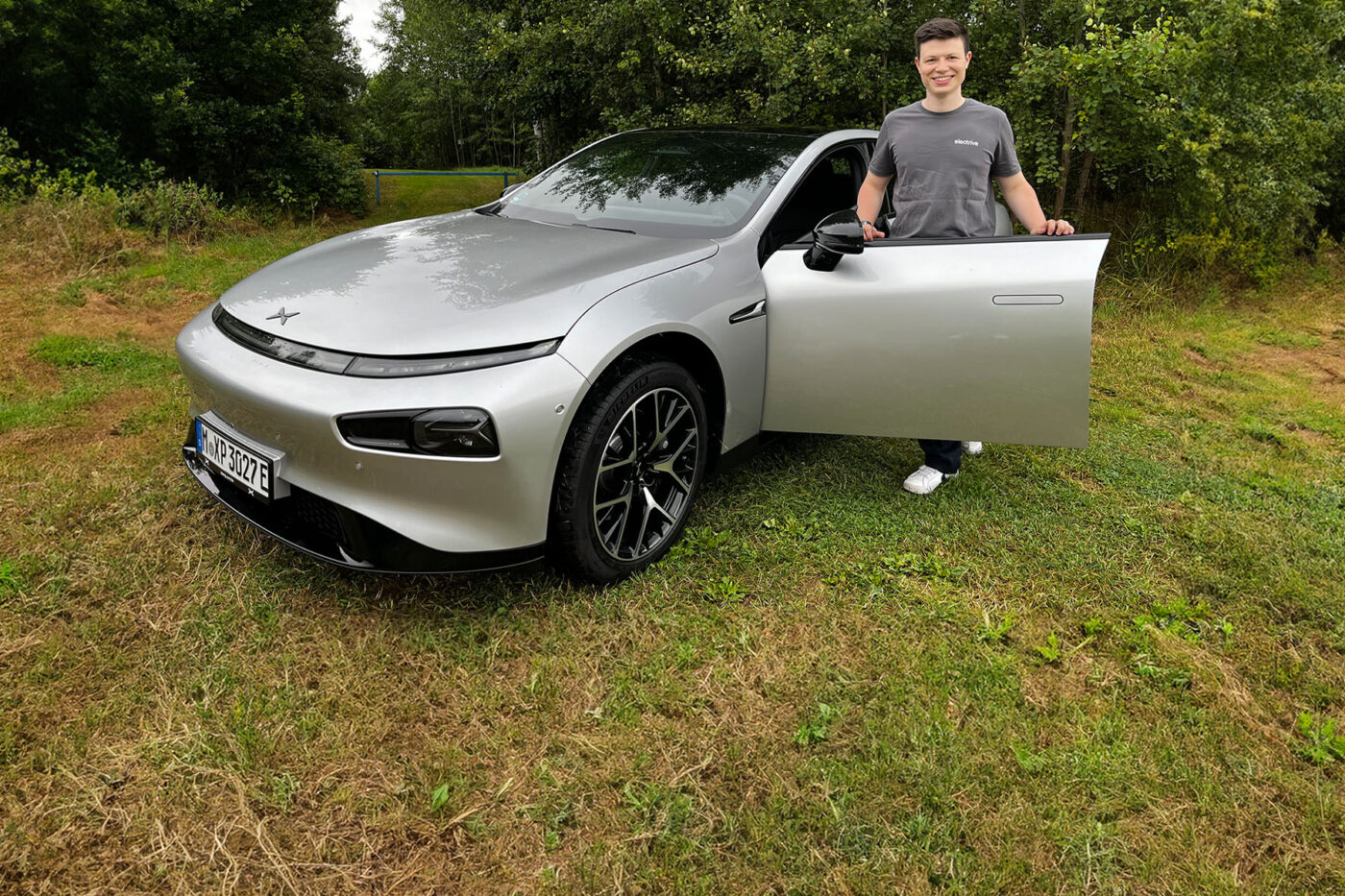
Testing the Xpeng P7 AWD Performance over a long distance: This might be the best EV from China
Many Chinese EVs have two weaknesses: Mixed, sometimes very low charging speeds and immature software with transmission errors and stutters. Low prices compensate for both, but longer journeys are still not very much fun with many of these vehicles. With Xpeng, the first Chinese OEM is venturing into the market that combines “affordable” and “high-quality”. We drove 1,700 kilometres in the splendid P7 sedan.
Familiar surroundings
Our test began with a surprise: a motor helps if the door does not close completely. Such a soft-close function is rather unusual in this price segment (our test car costs 63,460 euros) and is usually only found in very high-priced vehicles.
After getting in, you are immediately reminded of various competitors: There is a large screen in the centre, hardly any buttons and everything is very tidy. There is no head-up display, but there is a nice speedometer readout, and the contents to the left and right of the speed display can be configured freely. In the centre console, there is a typical smartphone tray with an inductive charging function, while the gears are selected via a lever to the right of the steering wheel column, as in a Mercedes and older Teslas. The exterior mirrors are adjusted using the buttons on the steering wheel.
The air conditioning vents are operated via the touchscreen, which also activates the ventilation of the front seats. You sit quite comfortably in the front seats. However, in the rear row, the Xpeng P7 has a typical problem: The battery in the underbody somewhat limits the space available. However, there is a surprising amount of space upwards; up to 1.80 metres, you can just about sit upright. But from 1.81 metres, you have to tuck your head in. The position of the knees is also not ideal because the high floor and the thighs do not fully rest on the seat. However, the legroom at the front is okay, and the amount of space is generally acceptable for an electric saloon because the battery has to go somewhere. The minimal use of glossy surfaces and the abundance of leather are positive features. Some hard plastic is still used in places, but even that is high quality.
Fast charging
The exterior of the car is as familiar as its interior. At first glance, the Xpeng P7 hardly stands out from the crowd; it has a typical automotive face. A closed front end, continuous light strips at the front and rear, retractable door handles and slightly curved lines are hardly noticeable on the road today – but they don’t catch the eye anywhere either. It is not a classic head-turner, at least not when driving. When locking and unlocking, however, passers-by always stop to ask questions when they hear the funny melody with which the car acknowledges locking or unlocking. Only then do many people notice the X-shaped logo.
However, we don’t have much time for this at the charging stations: it takes just 14 minutes to reach 50 per cent state of charge (SoC), and it charges from 4 to 80 per cent in 28 minutes. According to Ionity, the peak output from the charging station is 189 kW, and we achieve this value repeatedly without paying attention to preconditioning or the optimum choice of charging station.
Convincing on the long haul
With a full battery, we hit the motorway, where the car delivers many positive surprises and shows that there is cutting-edge technology under the bonnet of the ‘all-rounder.’ Starting with the consumption, we can’t get above 27 kWh/100 km even with a very sporty driving style (there is certainly room for improvement, but not during the summer holiday traffic). If we limit ourselves to 130 kph, the consumption meter only just exceeds the 20 kWh mark, which corresponds to a real motorway range of a good 410 kilometres with a net usable battery capacity of 82.7 kWh. The chassis is also surprisingly ‘un-Chinese.’ It is comfortable but not as soft and unfeeling as that of other suppliers from the Far East. It offers more contact with the road without being as wooden as a Tesla. The steering is also easy to operate but not as synthetic as in many other Chinese models.
There is only room for optimisation in terms of cornering and at very high speeds: According to the speedometer, the car is locked at 215 kph, into which it runs quite abruptly and would obviously still have reserves for higher speeds. Above 180 kph, the suspension feels a little fluttery, and the steering could be more direct. Nevertheless, hardly anyone does it better in this price segment, especially not anyone from China.
Good consumption figures
The consumption figures are also decent off the highway: the P7 consumes around 17 kWh/100 km in rural areas and only 14 kWh/100 km in the city, making 490-590 kilometres possible for the everyday commuter. It should be noted that we tested the car in summer temperatures of 25 to 32 °C in southern Germany, so these figures should be seen as the optimum and could be a good deal lower in winter.
We like the driving modes: ‘Classic’ is nicely balanced, ‘Eco’ is similar to the accelerator pedal characteristic of a combustion engine and is thus good for those switching to a new mode. In ‘Sport’, the car is as venomous and directly connected to the power as a performance variant should be. Only the one-pedal drive option called ‘X-Pedal’ needs further improvement. It’s a bit clumsy; for example, BMW, Kia or Tesla have solved this more beautifully.
Impressive software
The infotainment runs flawlessly and very quickly. Thanks to the loudspeaker in the headrest, the sat nav whispers instructions discreetly into your ear instead of constantly croaking into the music or phone calls. The integration of third-party apps is neatly done (everything from Spotify to TikTok to Disney+ is included), and the logically structured menu navigation makes it easy to find your way around. In 2024, the one-click deactivation of the speed warning sound is really important – especially because the system complains vigorously even in bright sunshine if you don’t stick to ’80 kph in wet conditions.’
Although the voice control only understands English, it does so perfectly. Not only entertainment, but also air conditioning, seat ventilation or the headlights can be controlled via voice control. The precision of the traffic jam warnings is impressive. When you hear a discreet ‘traffic jam ahead’ from the headrest, you can put your foot on the brake pedal because there is guaranteed to be a traffic jam lurking behind the next bend. There is a small deduction for the charging planner, which regularly wants to head for slow 50 kW charging stations on the motorway.
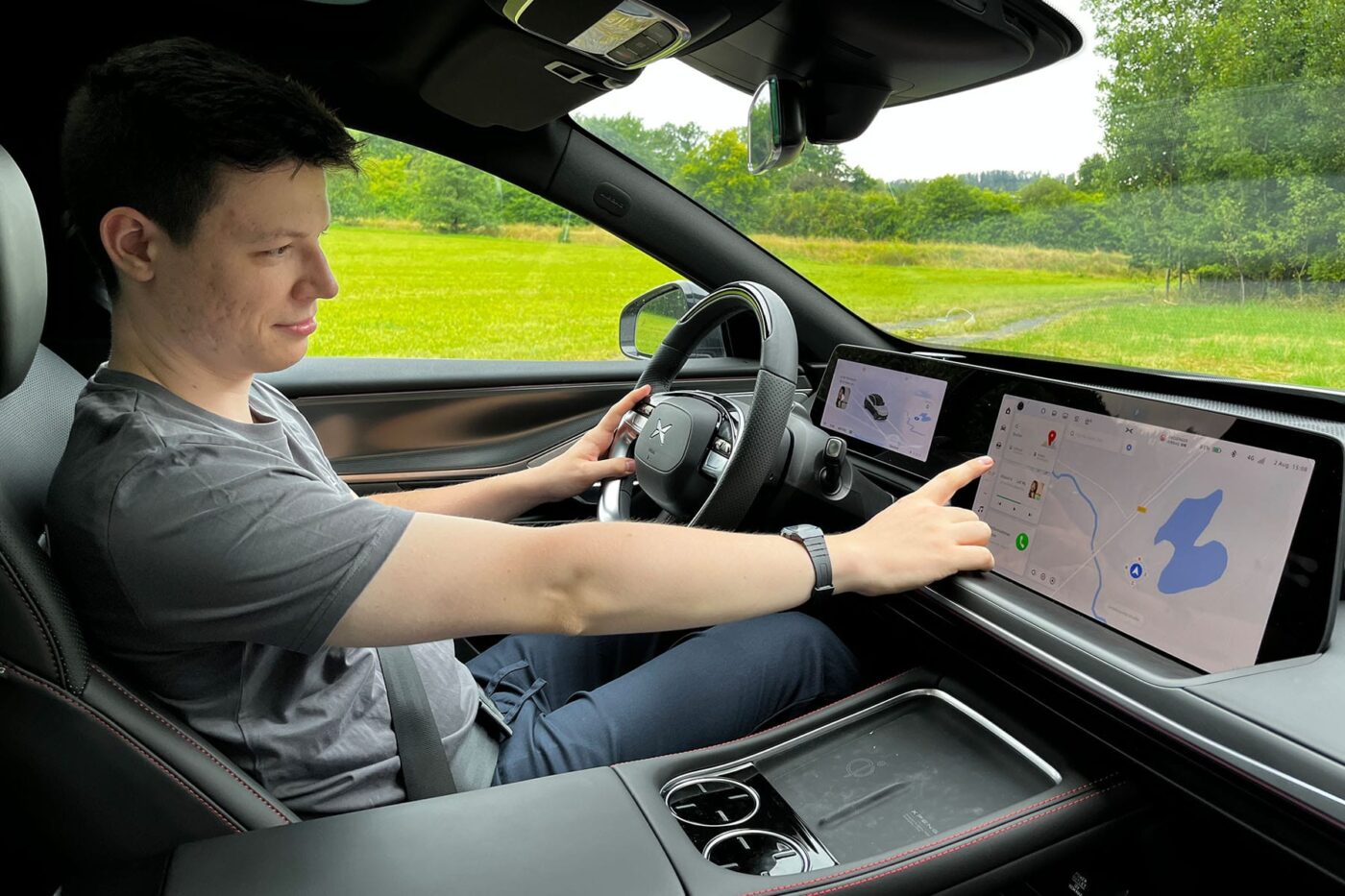
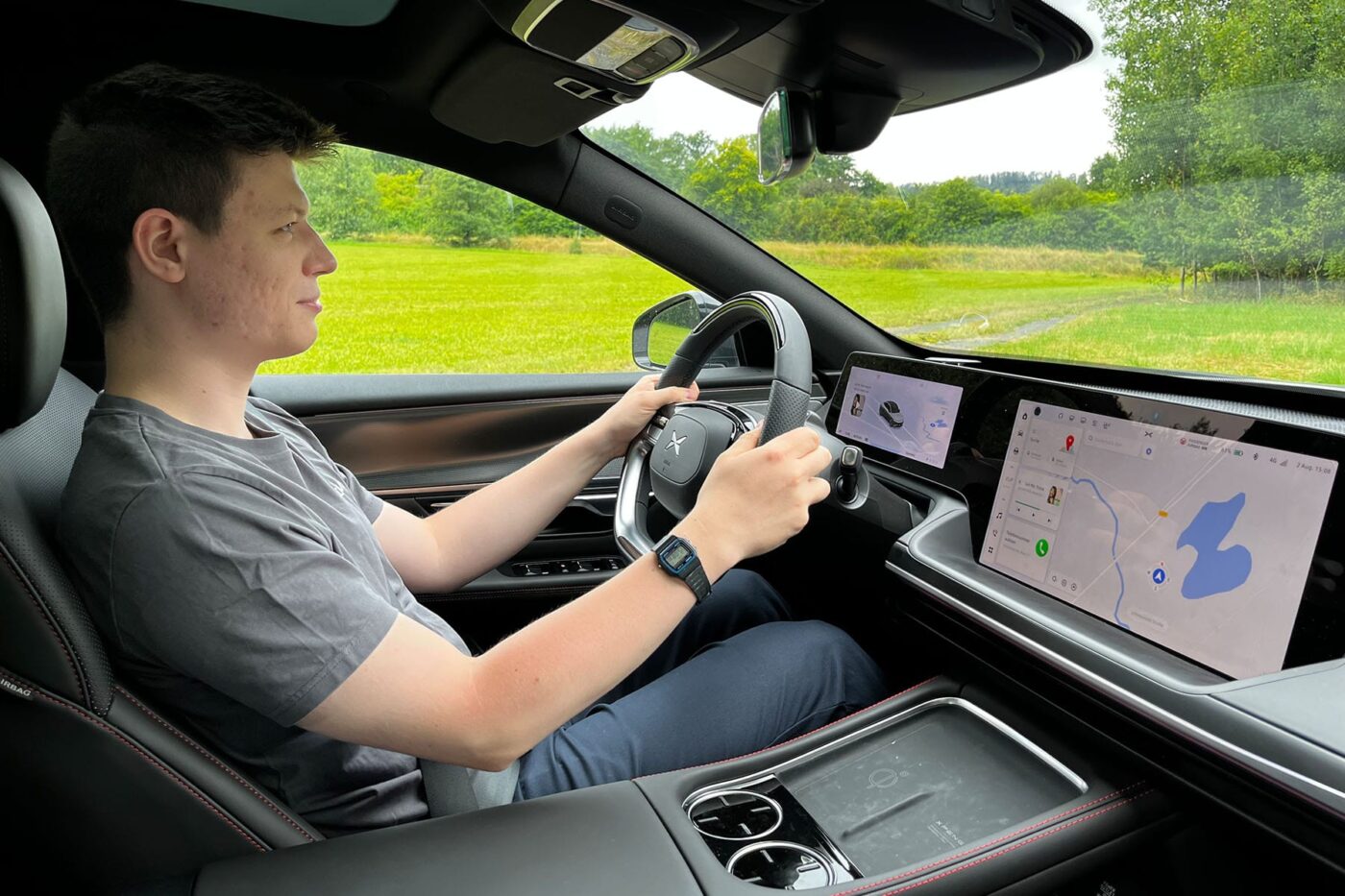
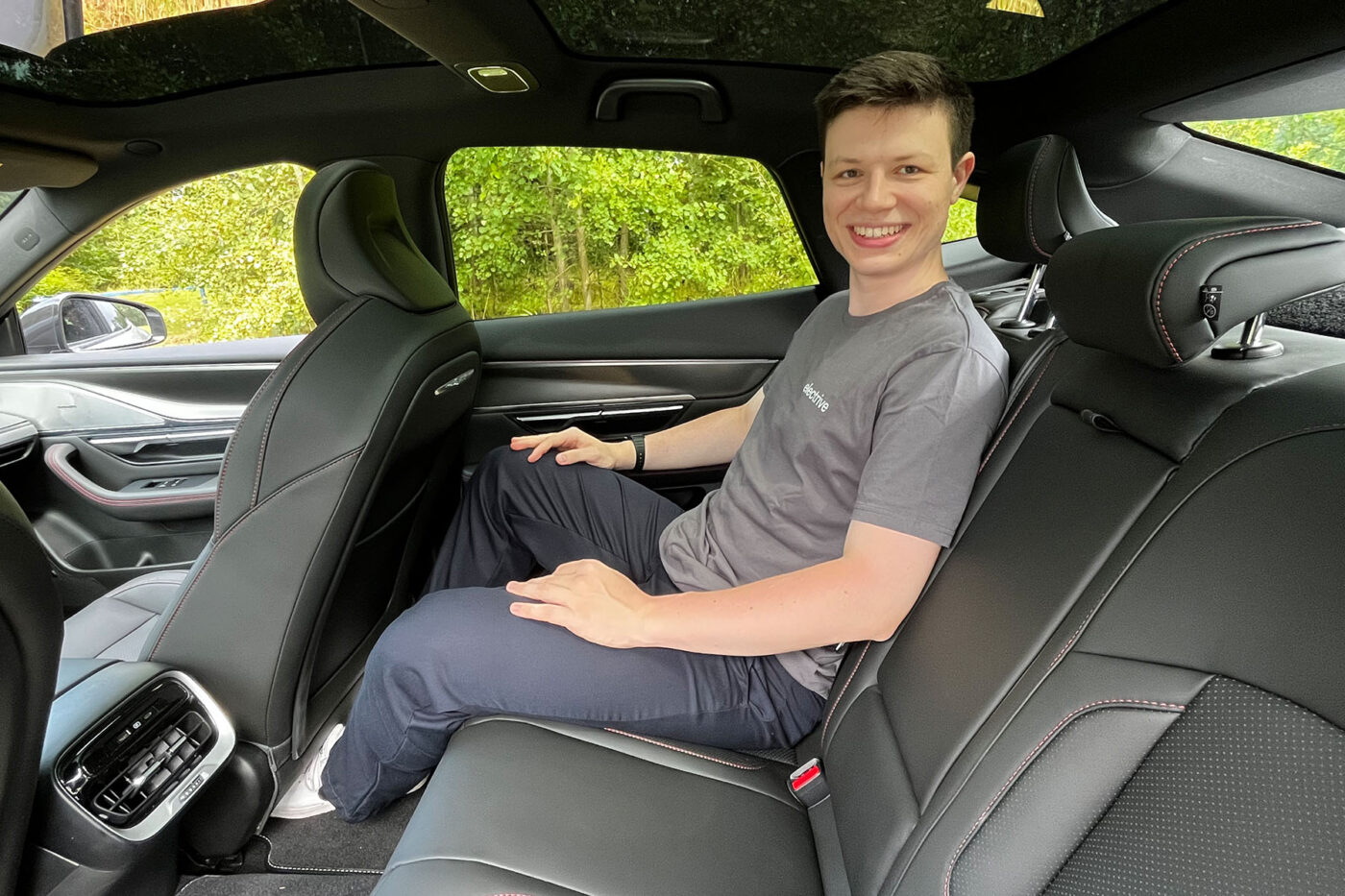

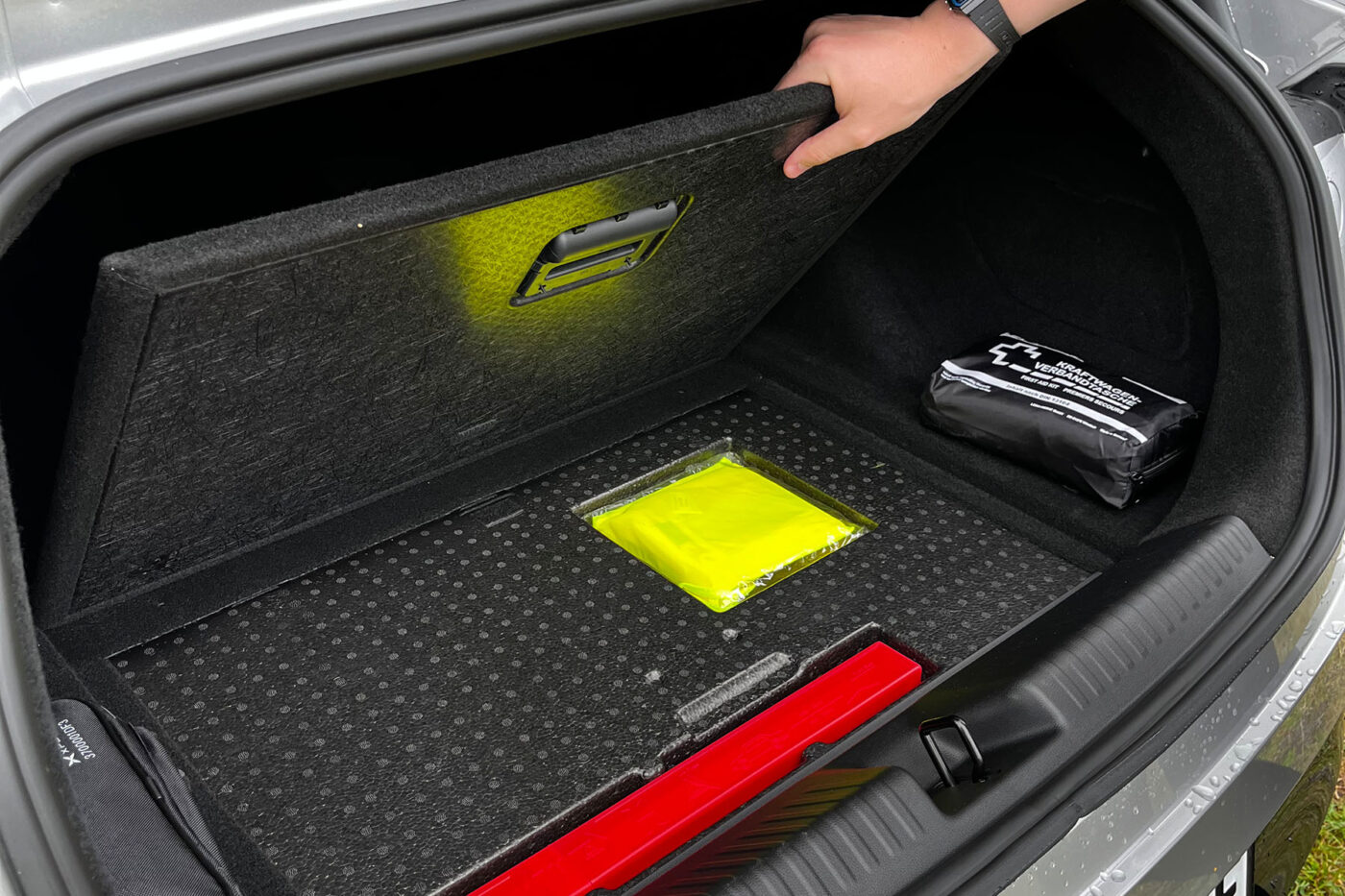
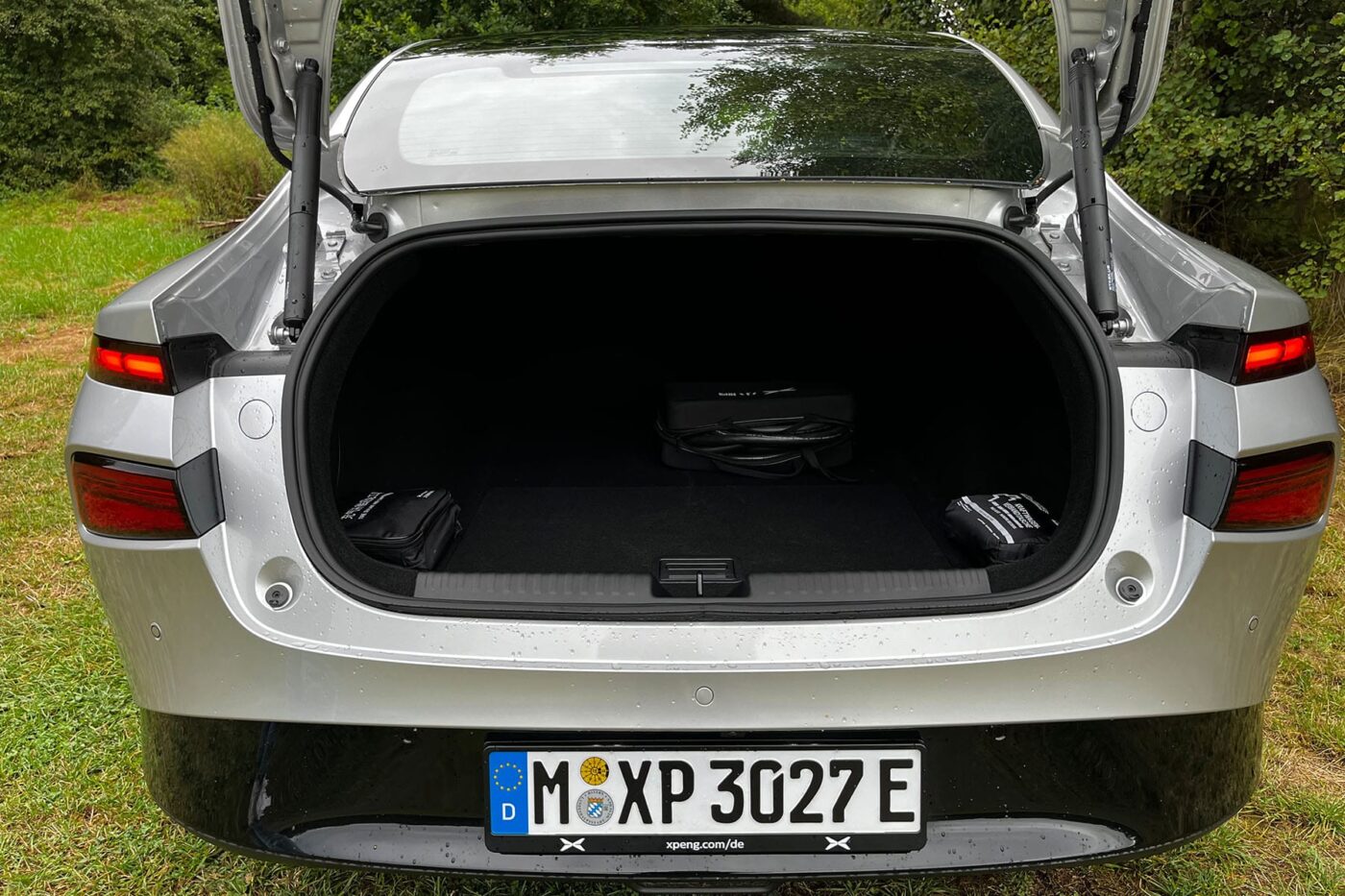
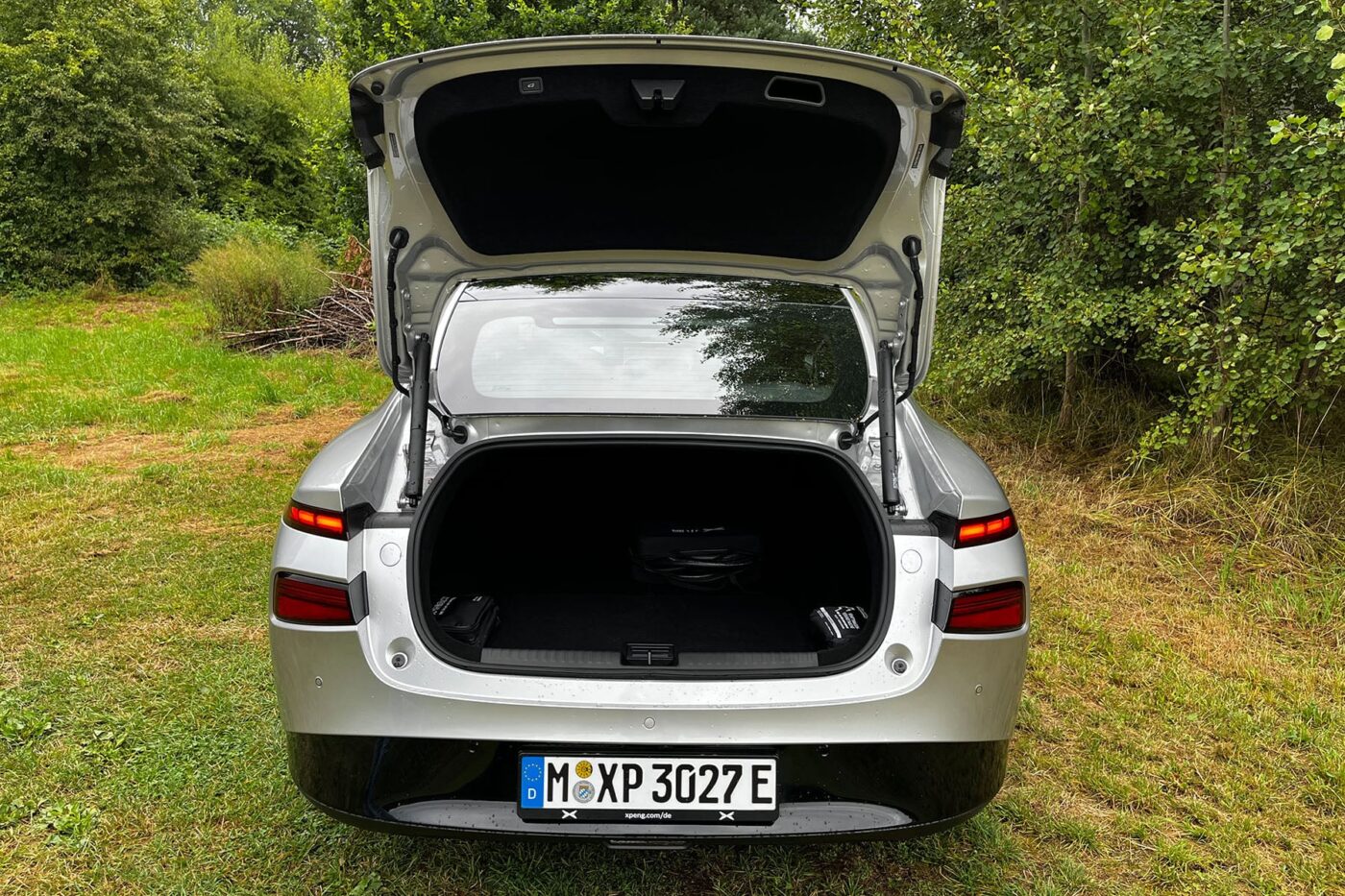
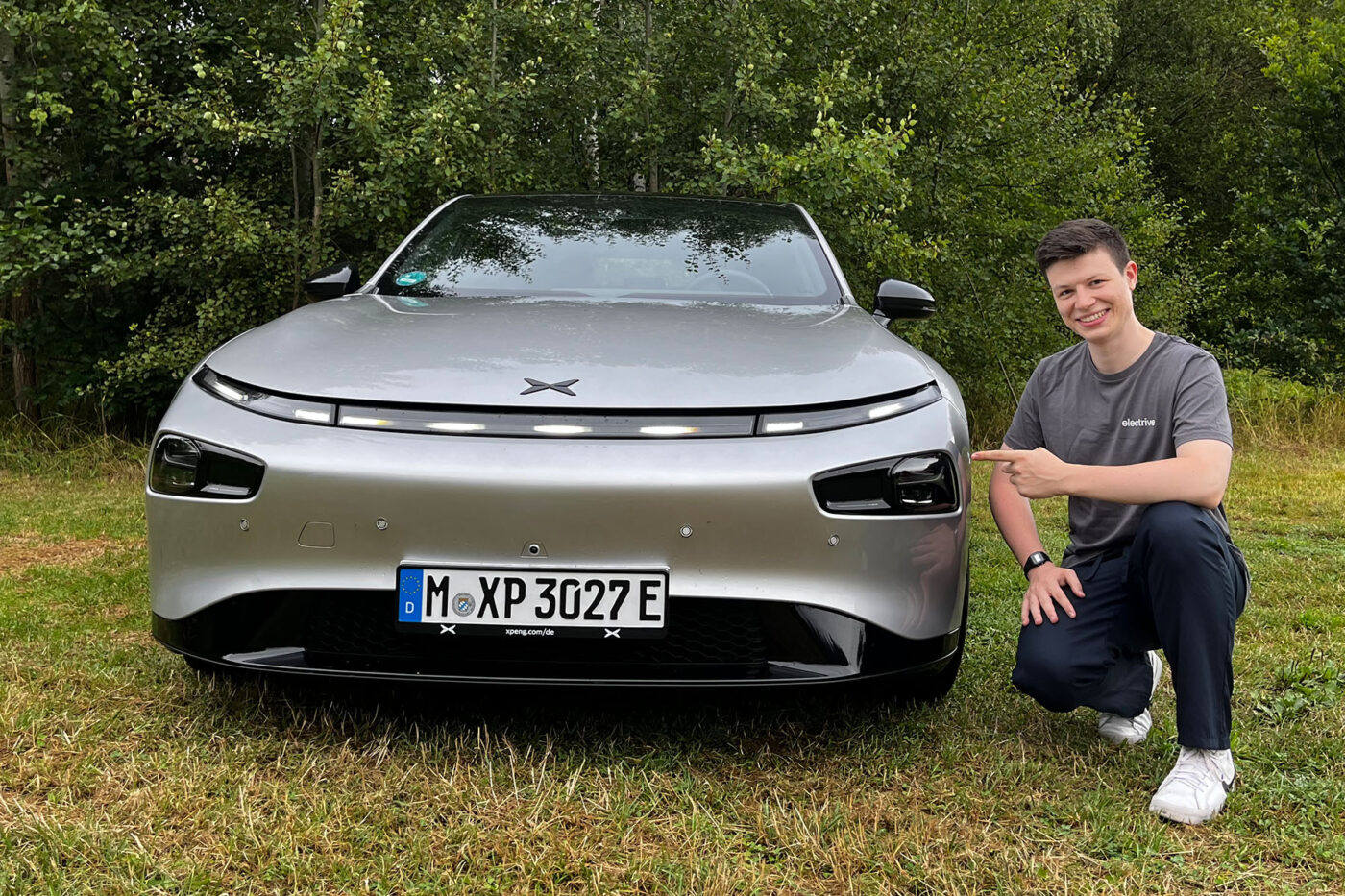
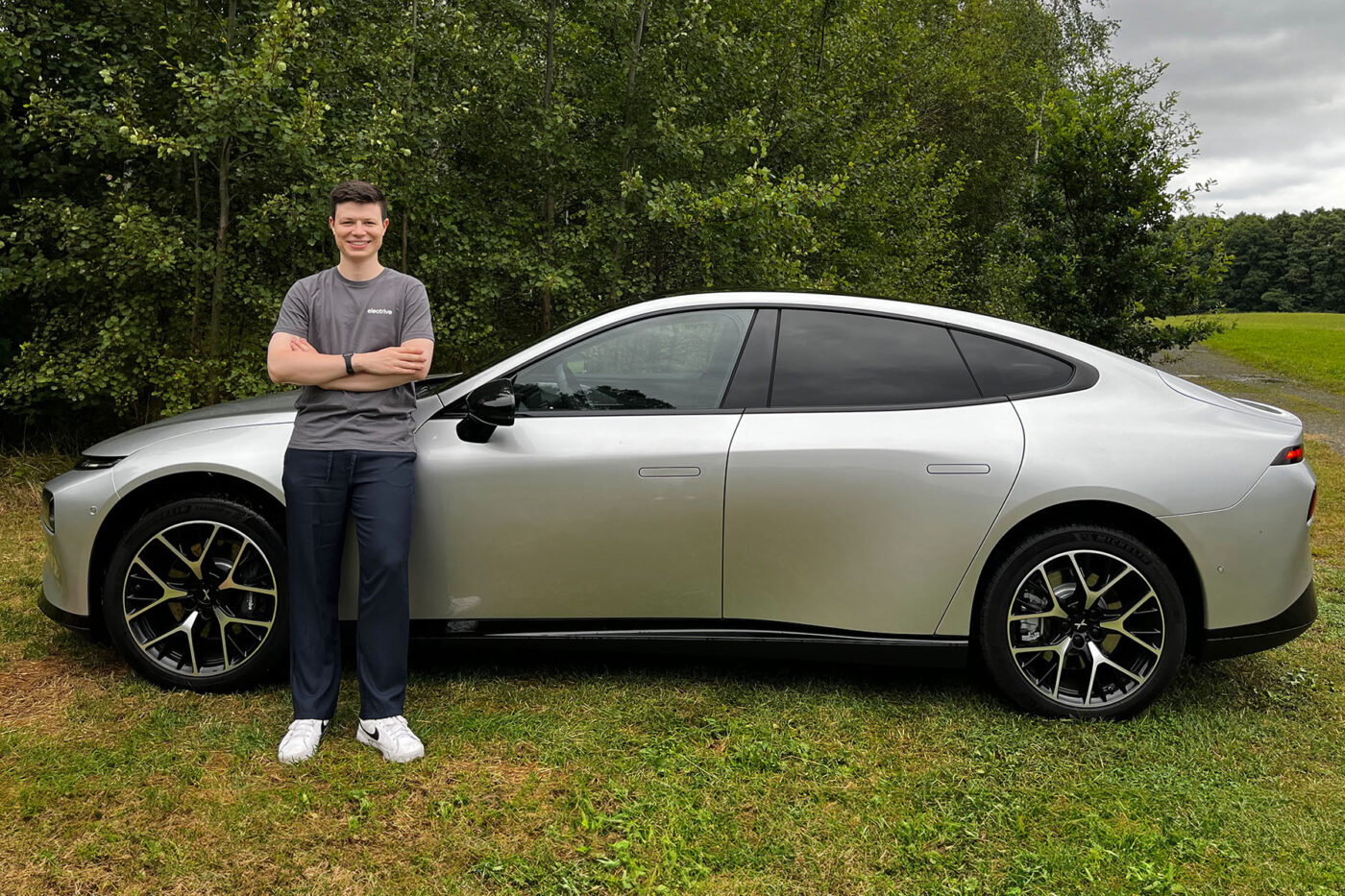
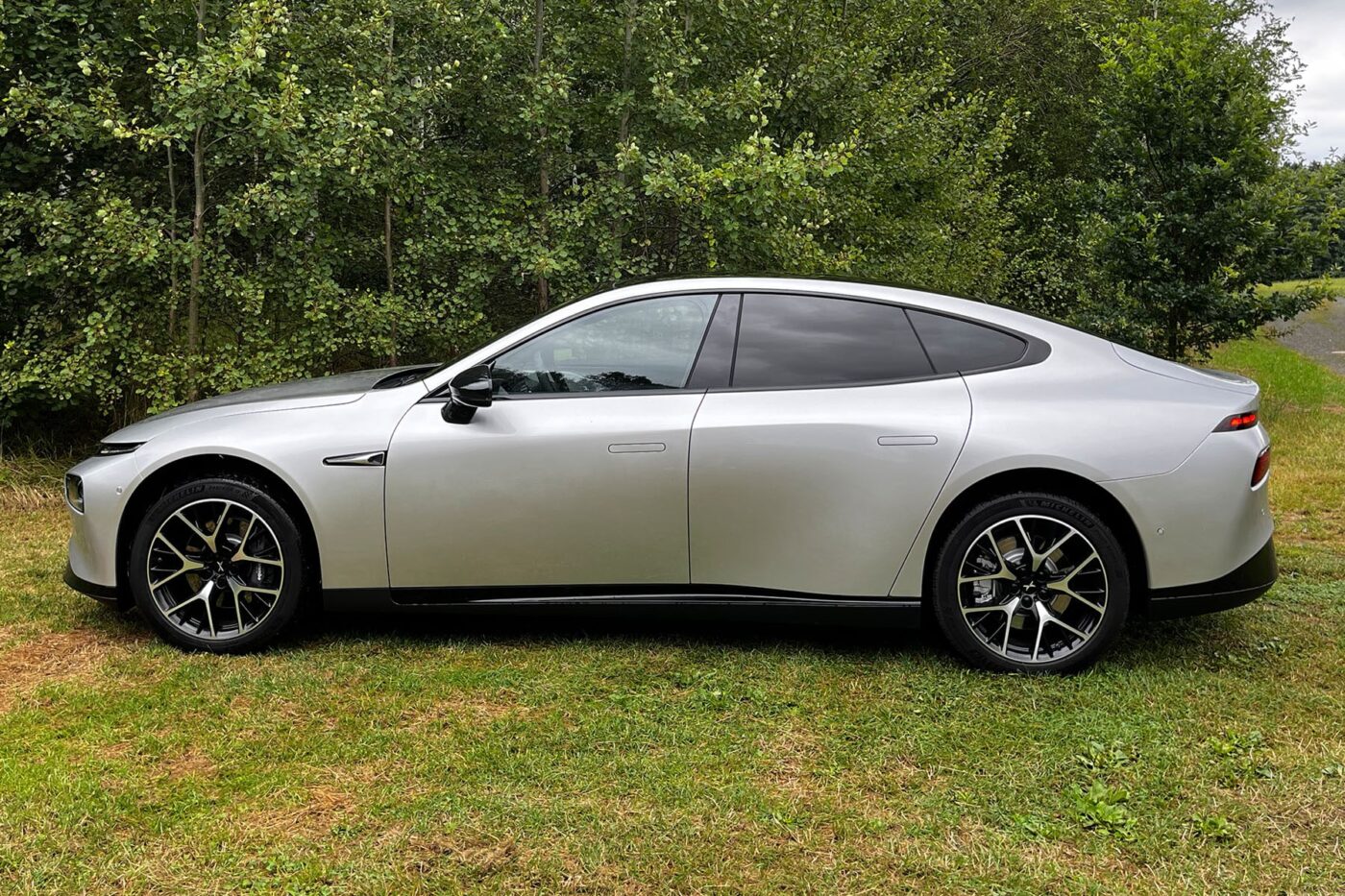
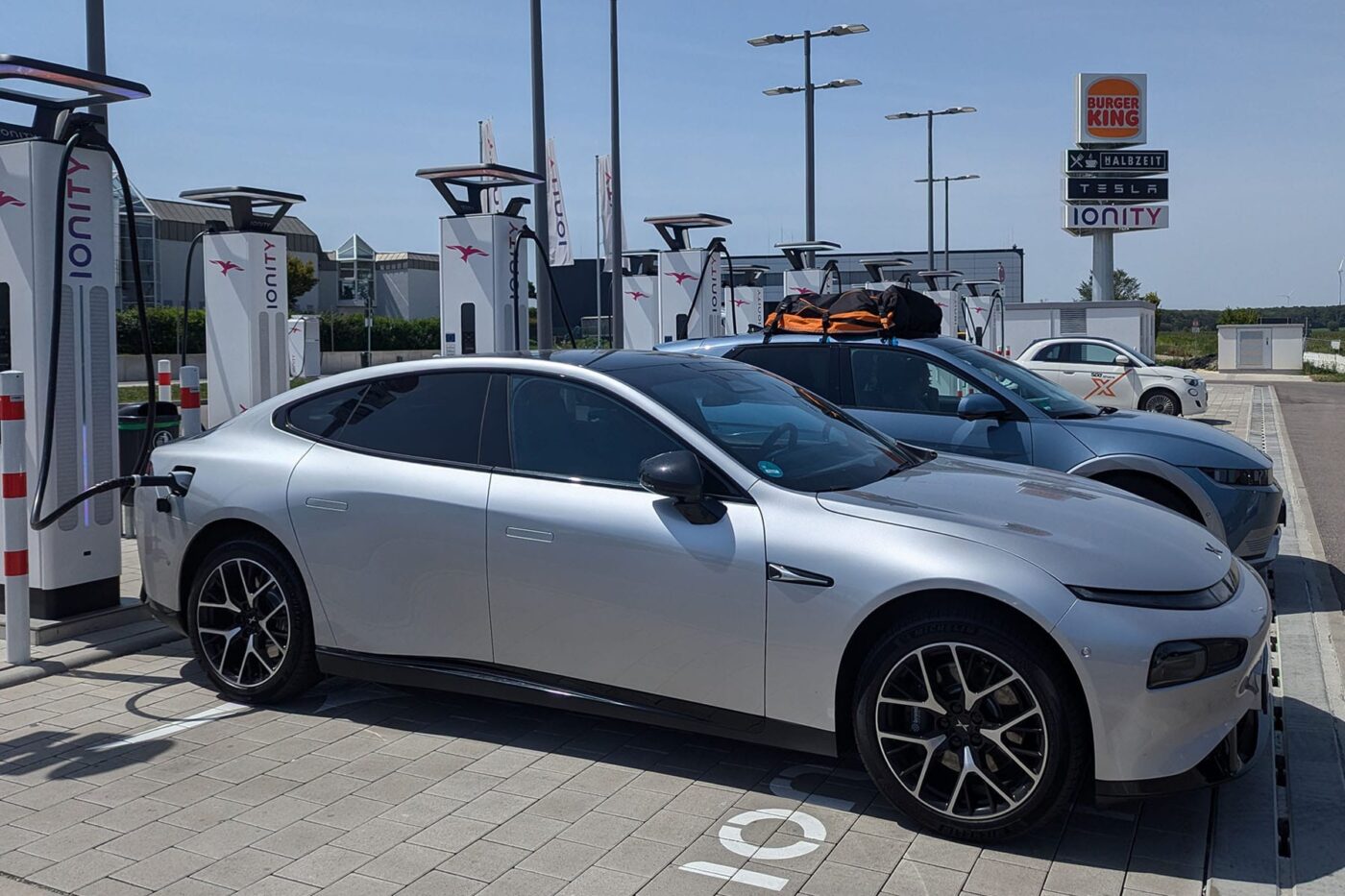
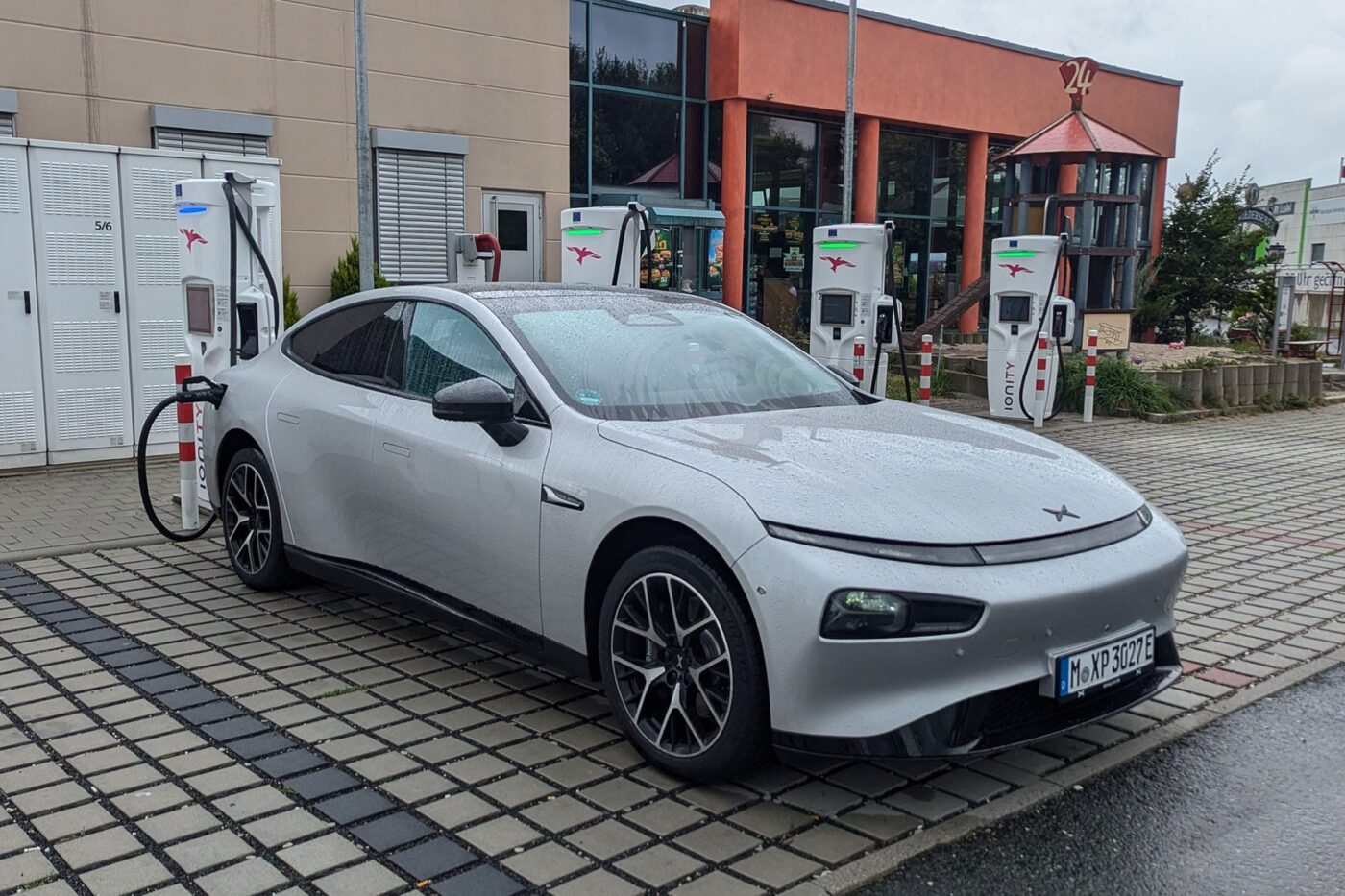
Weak point: assistance systems
The only serious drawback we noticed in the Xpeng P7 was the assistance systems. In theory, they can do the usual standard things (keep your distance, stay in lane and change lanes after indicating), but the steering tends to shake back and forth and feels a little unsafe. The ‘X-Pilot’ makes too many mistakes on country roads and in roadworks, and the slightly jerky lane keeping can also become unpleasant in the long run on straight stretches of road. The competition from Germany does this even better. The parking aid and 360° camera, on the other hand, are really good. Everything works as it should.
Here to stay
Xpeng did pretty much everything right at the German market launch; the P7 is a more mature and better car than almost all other Chinese models. In particular, the smooth software, low consumption figures and high charging performance set it apart from the rest of the Far Eastern competition. Minor faults can be overlooked in view of the good price-performance ratio.
We have already seen many new stars in the automotive sky. The first have already set again, and many will probably follow. Xpeng, however, seems to be here to stay. Starting at 49,600 euros, the P7 rolls to customers as a rear-wheel drive model – the German car industry has yet to come up with an adequate answer in this price range. In August, we also tested the P7’s big brother, the Xpeng G9 electric SUV. You can find our car review here.



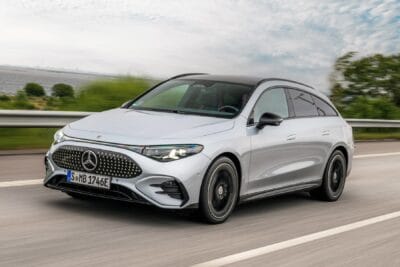
3 Comments